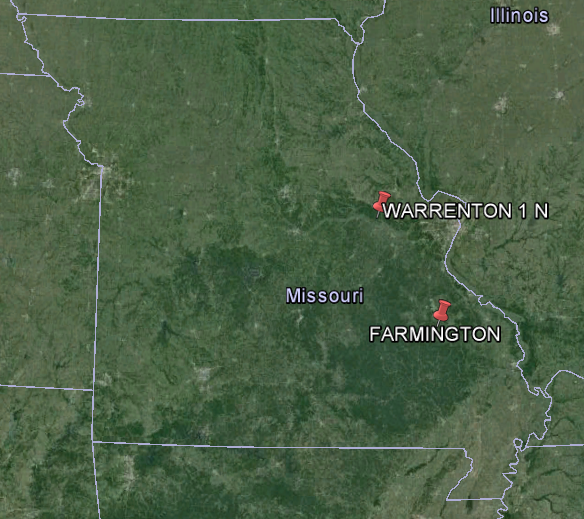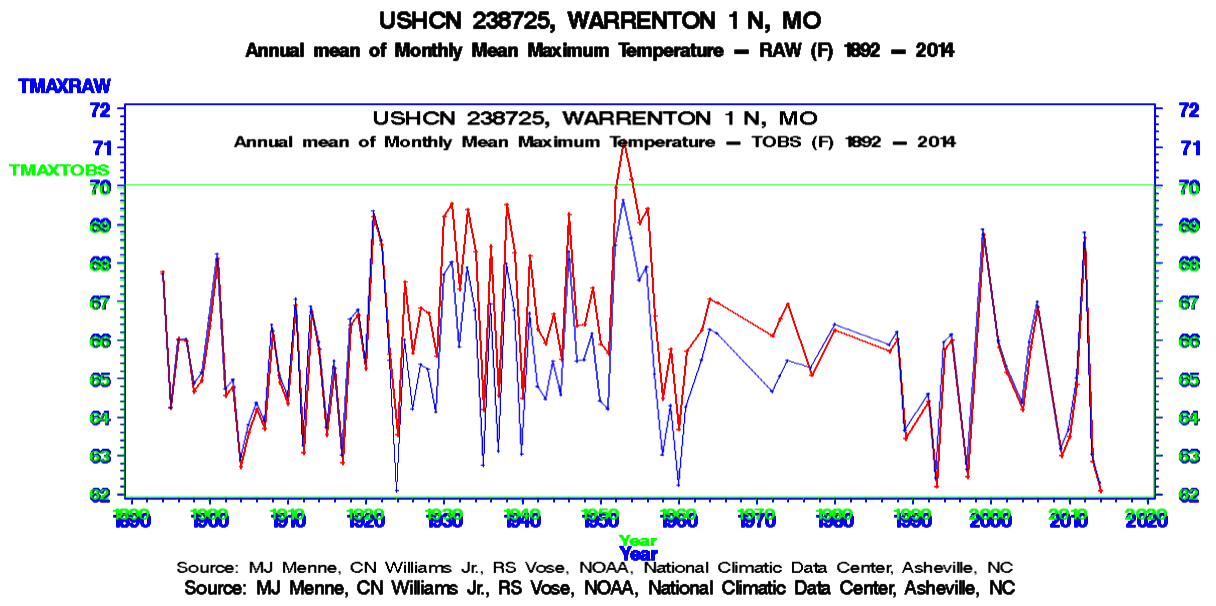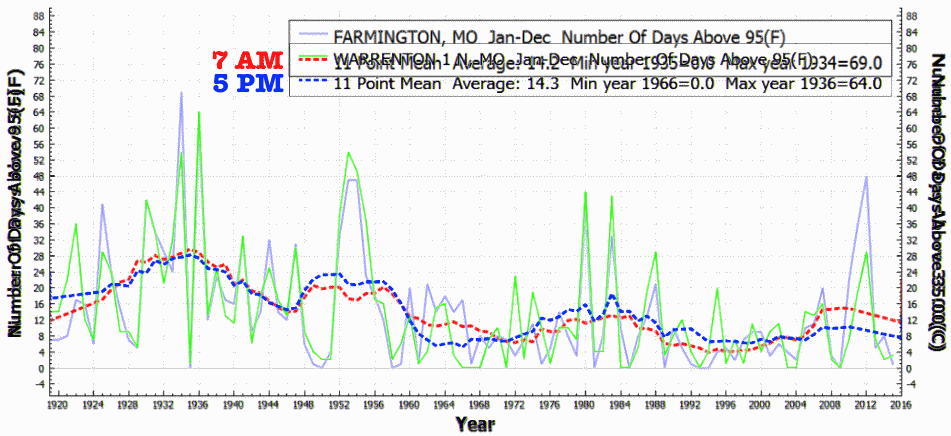The USHCN Time Of Observation BIAS (TOBS) adjustment is based on the idea that thermometers reset in the afternoon tend to double count hot days and thus produce a warm bias. For example, Warrenton, MO reset their thermometer at 5PM from 1923 to 1976, so NOAA deducted about 1.5 degrees to compensate.
This theory is easy to test by comparing vs. a nearby morning station. According to theory, the morning station should be cooler. Farmington, MO is close to Warrenton and reset their thermometer at 7 AM from 1931 to 1950, so they should be cooler than Warrenton during that period.

The theory doesn’t work. Farmington summer maximum temperatures (red below) are nearly identical to Warrenton temperatures (blue below.) Only exception is 1935, which is missing data at Warrenton.

Likewise, the number of hot afternoons is nearly identical at the two stations – again Farmington in red and Warrenton in blue. If double counting was occurring, Warrenton would have more hot afternoons than Farmington during the 1930’s – but it doesn’t.
TOBS theory simply does not work in practice.



